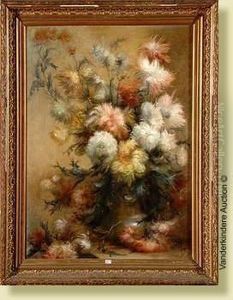Constant Pr. Hoste Paintings
Constant Pr. Hoste, born in 1884 and deceased in 1971, was a Belgian artist whose work, though not widely known in the mainstream art world, offers a fascinating glimpse into the European art scene of the early to mid-20th century. His life and art were shaped by the tumultuous events of his time, including two World Wars, and the evolving artistic movements that swept through Europe during his lifetime.
Hoste's artistic journey began in an era dominated by the aftermath of Impressionism and the rise of Modernism. He was part of a generation that was seeking new ways to express the complexities of the modern world. His work, which spans painting, drawing, and printmaking, often explored themes of nature, human figures, and urban landscapes, reflecting the changing realities and anxieties of the 20th century.
During his career, Constant Pr. Hoste navigated through various artistic movements, showing an adaptability and a willingness to experiment with style and subject matter. Despite this, he remained largely anchored in the tradition of European figurative art, often focusing on the beauty of the ordinary and the tranquil aspects of life, which provided a counterpoint to the chaos and destruction that marked much of his lifetime.
Hoste's contributions to art were recognized in his time through exhibitions and the acquisition of his works by collectors and institutions. However, his legacy is that of an artist who, while perhaps not achieving the fame of his contemporaries, dedicated his life to his craft with a quiet persistence and a deep love for the beauty of the world around him.
After his death in 1971, Constant Pr. Hoste left behind a body of work that continues to be studied and appreciated by art historians and collectors who are interested in the diverse and complex tapestry of European art in the 20th century. His art serves as a window into the soul of an artist who lived through some of the most significant events in modern history, offering insights not only into the era's artistic movements but also into the human condition itself.









